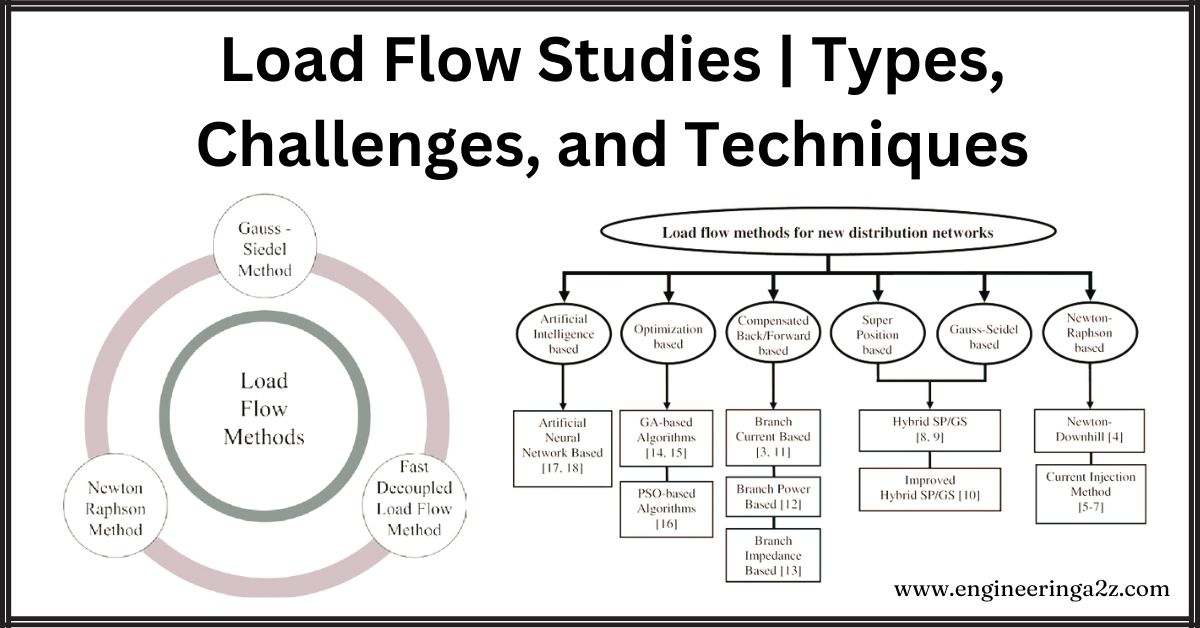
Table of Contents
Load Flow Studies
Load flow studies are crucial for system planning and operation. They help assess system performance and operations under specific conditions.
Power systems are complex and have nonlinear dynamics. Load flow analysis is used to understand how changing one parameter affects others like voltage, current and power. This analysis provides the steady-state solution of a power network for given conditions, including network layout and load levels.
Load flow analysis is essential for analyzing, operating, and planning the distribution network. It calculates nodal voltages, phase angles and power injections at all buses and power flows through lines, cables and transformers.
The power flow problem is formulated as a set of nonlinear algebraic equations, solved using appropriate mathematical techniques.
Types of Buses in Load Flow Analysis
1. Slack Bus
Given: Voltage magnitude and voltage angle.
Calculated: Line active power and reactive power.
2. PV Bus
Given: Active power and voltage magnitude.
Calculated: Reactive power and voltage angle.
3. PQ Bus
Given: Active power and reactive power.
Calculated: Voltage magnitude and voltage angle.
Challenges of Load Flow in Smart Grid
Adapting Transmission and Distribution for Renewable Energy
1. Adaptability to Load Flows: Renewable energy generation requires Transmission and distribution systems to adapt to varying load flows.
2. Self-Adjusting Coordination: Systems must self-adjust to ensure proper coordination between network parts.
3. High-Impedance Topology Matching: Distribution networks with random and uncertain loads require intelligent analytical tools for high-impedance topology matching.
4. Reverse Power Flow and FACTS Devices: With the possibility of reverse power flow, using FACTS (Flexible AC Transmission Systems) devices and power electronics is essential.
Load Flow Equation
Load flow analysis relies on the following non-linear power flow equation at each bus:
For the n-bus system, the equation of nodal current is
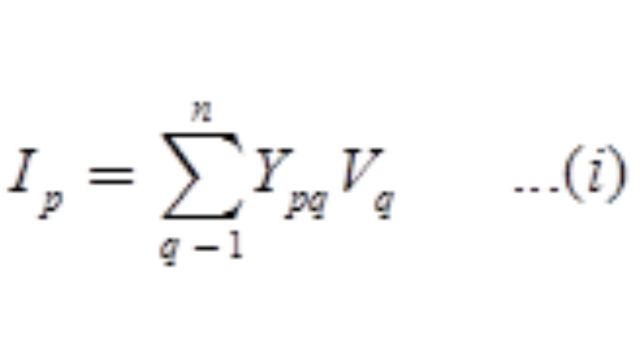
(Where p = 1,2, … , n)
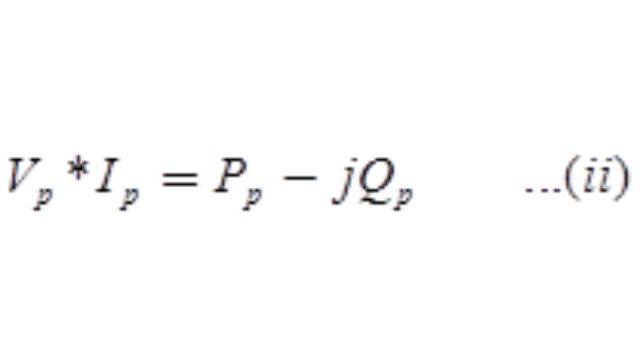
Where, P = Active power
Q = Reactive power
Substituting for Ip in Eq. (iii),

(Where p = 1,2, …,n)
The real and reactive powers have substituted Ip because normally in a power system, these quantities are specified.
Load Flow Technique Comparison
1. Old Load Flow Technique
- Load Flow: Uses Kirchhoff’s law to manage power distribution.
- Power Generation: Adjusts based on demand.
- Manual Control: Involves manual switching and responding to issues.
- Monitoring: Uses simulation and tracking to monitor and respond to system changes.
2. Desired Load Flow Technique
- Electronic Load Flow: Electronic Load Flow uses electronics to manage power distribution.
- Controllable Generation: Adjusts power generation as needed.
- Dynamic Balance: Manages fluctuating and random sources and demands to maintain balance.
- Automatic Response: Automatically responds and predicts issues to avoid them.
- Overload Monitoring: Monitors for overloads and prevents bottlenecks.
Distribution System Load Flow Characteristics
- Structure: Radial or weakly meshed networks.
- Line Impedances: High X/R ratios (reactance to resistance).
- Single-Phase Loads: Managed by the distribution load flow program.
- Proximity to Load Centers: Distributed generation, renewable generation and cogeneration power supplies are installed near load centers.
- Short Line Segments: Many short lines with low impedance values.
Difficulties of Distribution Power Flow Analysis
- Network Structure: Can be radial or weakly meshed.
- Low X/R Ratio: Distribution feeders have a low reactance-to-resistance ratio.
- Unbalanced Loads: Handles loads that are not evenly distributed.
- Line Segments: Includes both short lines with low impedance and long feeders with high impedance.
- Distributed Generators: Connects various distributed generators.
Load Flow Methods for Distribution System
- Forward Backward Sweep Method:
- Forward Sweep: Solves branch current or load flow.
- Backward Sweep: Computes nodal voltages.
- Application: Designed for radial or weakly meshed distribution networks.
- Newton Method:
- Uses power mismatches at the ends of feeders and laterals.
- Iteratively solves for nodal voltages.
- Gauss Method:
- Uses the bus impedance matrix equation.
- Iteratively solves for branch currents.
Frequently Asked Questions (FAQs)
What is distribution load flow?
Distribution load flow is the power flow analysis in a distribution network, calculating voltages, currents and power through lines to ensure efficient operation.
How do you calculate load flow?
To calculate load flow, use mathematical methods like Newton-Raphson, Gauss-Seidel or Forward-Backward Sweep. These methods solve equations to find voltages, currents and power flows in the electrical network.
What is the difference between load flow and power flow?
Load flow and power flow are terms often used interchangeably to describe the analysis of electrical power systems. However, “load flow” typically emphasizes the distribution aspect, while “power flow” can refer to both transmission and distribution network analysis.
What are the advantages of load flow?
Load flow analysis helps optimize system performance, identify potential issues, ensure reliable power delivery and plan for future expansions.
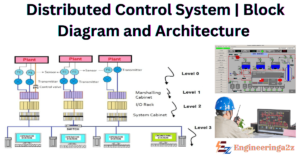


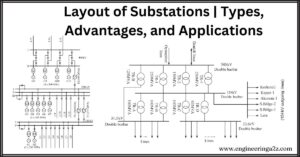
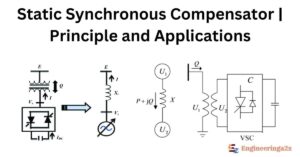
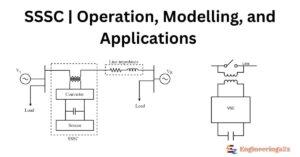






Leave a Reply